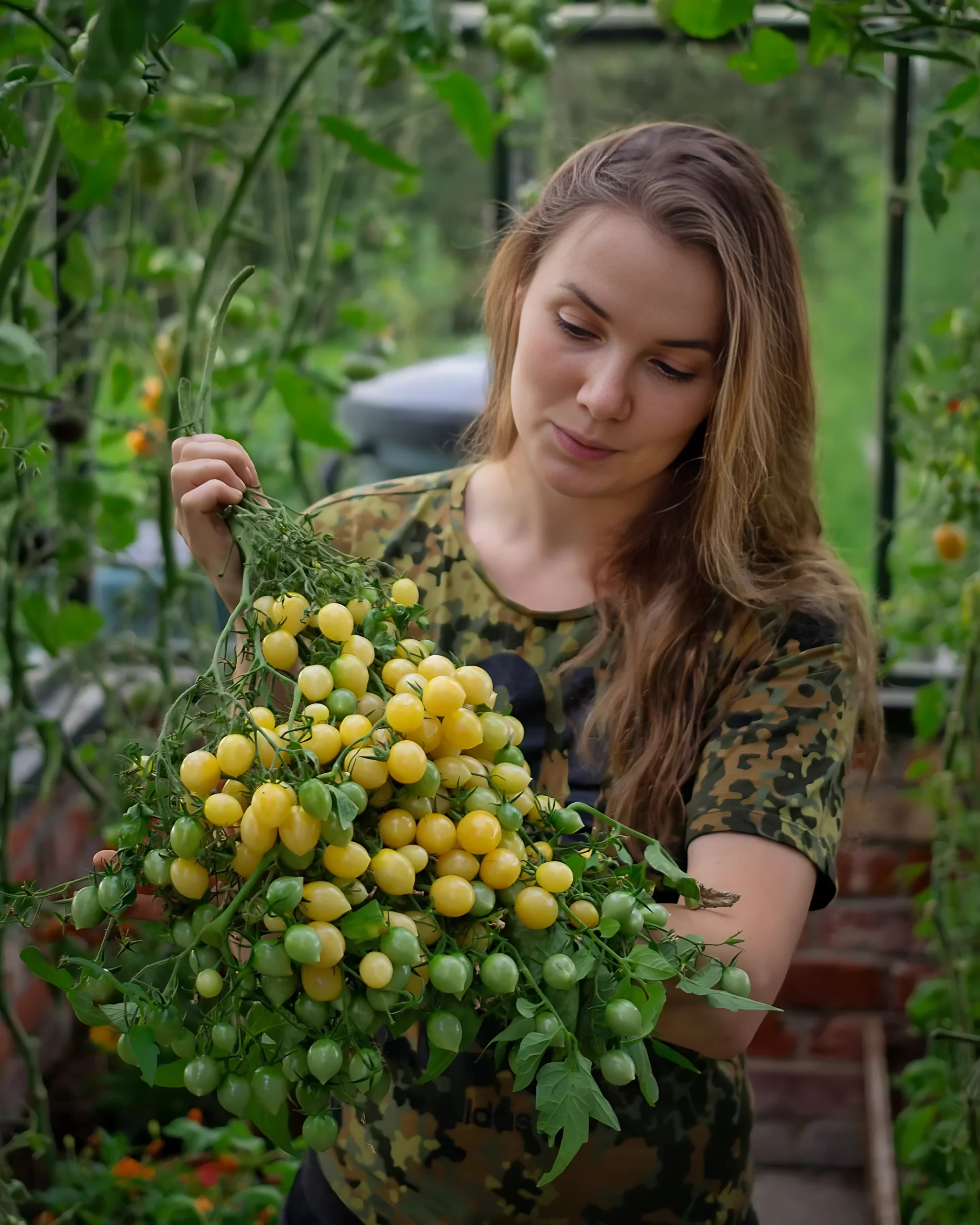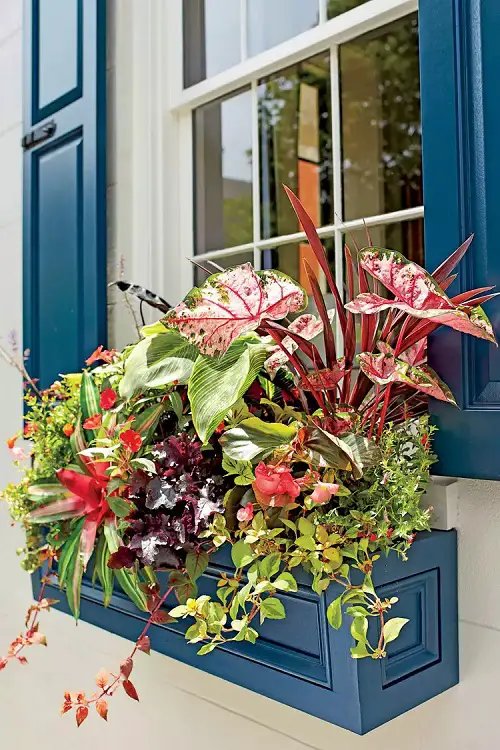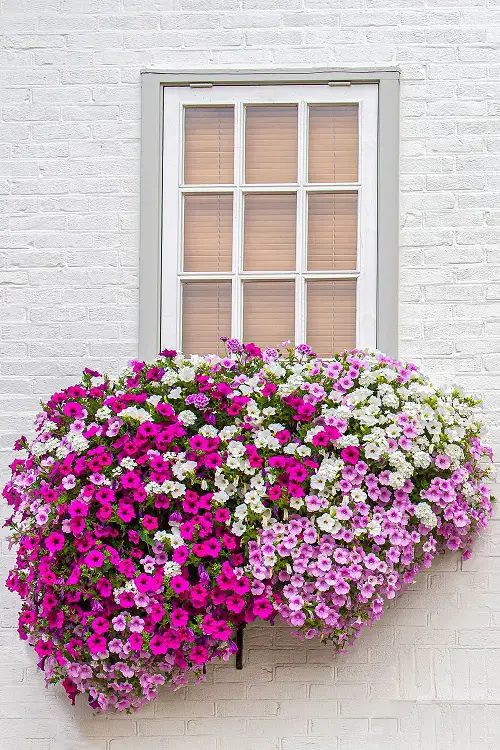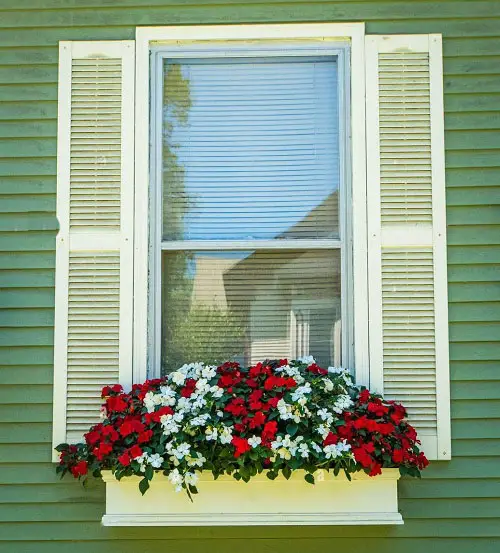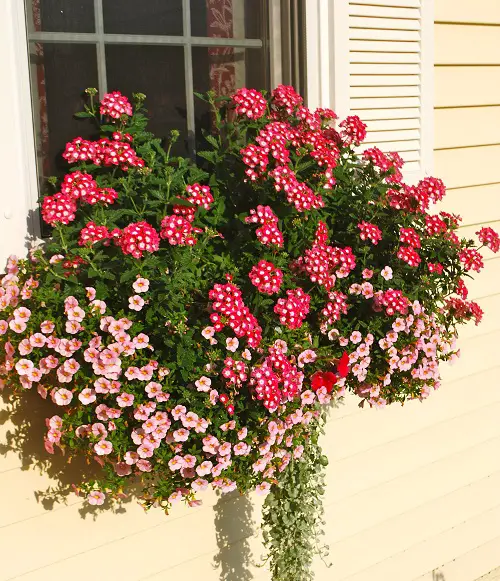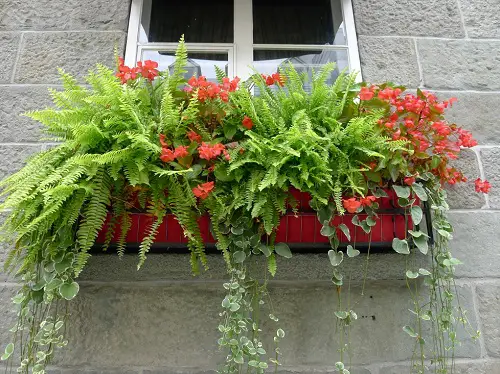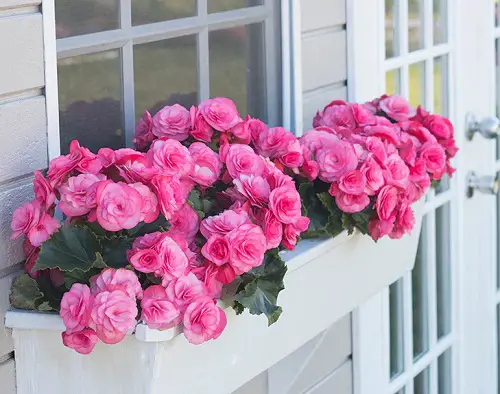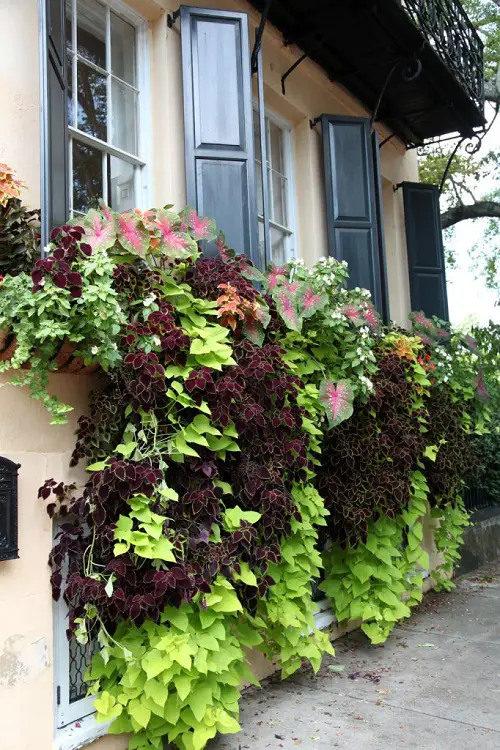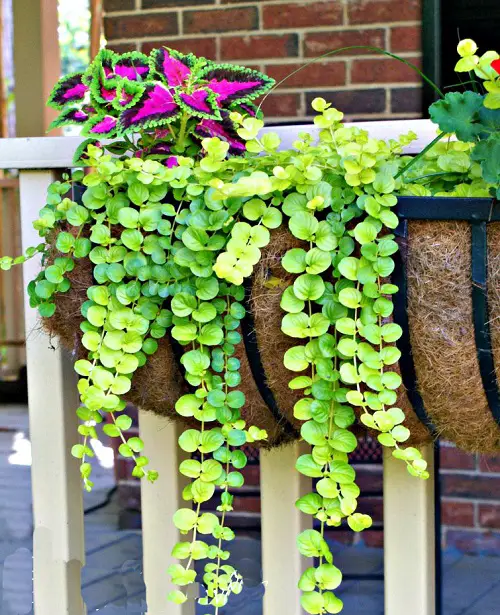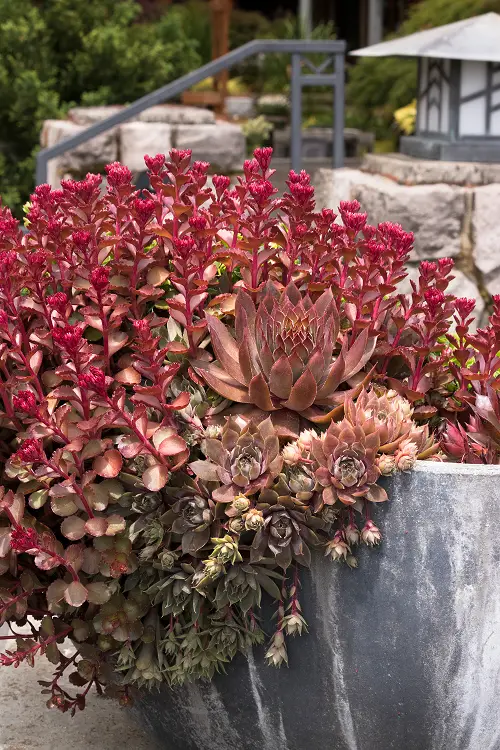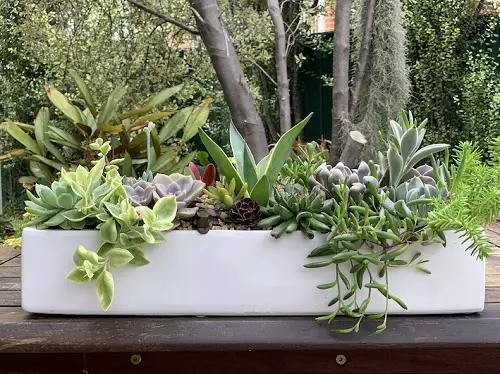Want to add an instant curb appeal to your home? Check out the most striking Plants for Window Boxes that you can grow in a small space!
Dress up your windows with cute boxes with our list of Best Plants for Window Boxes! How wonderful will it be to see window-sills full of blooming beauties!
Best Flower Plants for Window Boxes
1. Petunia
Botanical Name: Petunia
USDA Zones: 9-11
It is one of the best plants for window boxes that bloom flowers in shades of purple, pink, red, yellow, and white and even striped, fringed, and speckled varieties.
2. Touch-me-not
Botanical Name: Impatiens
USDA Zones: 10-11
This is an excellent choice for gardeners who want a beautiful, elegant flower plant to sit on their window boxes and is also easy to maintain and able to grow in shades.
3. Snapdragons
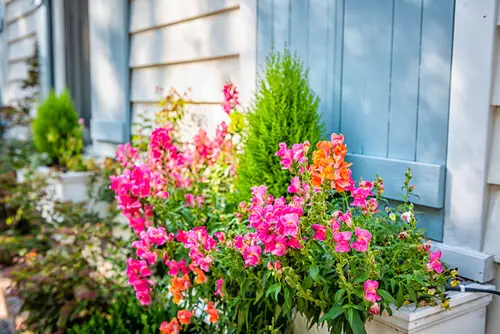
Botanical Name: Antirrhinum majus
USDA Zones: 7-10
It could be an eye-catching addition to your window box with its flashy tall spikes covered in grand blooms. These plants for window boxes thrive best in full sunlight.
4. Fuchsia
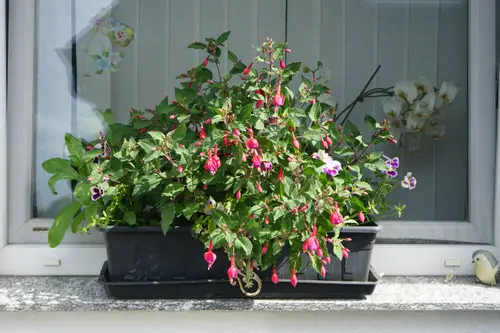
Botanical Name: Fuchsia
USDA Zones: 6-9
The splendid pink and purple blossoms could add beauty to your window boxes, but remember to place them in the shade as most varieties bloom all season long in the shade.
5. Vervain
Botanical Name: Verbena
USDA Zones: 7-11
Usually, Vervain blooms are tubular in shape and grow in round clusters and flowers only through summer and fall.
6. Crane’s Bill
Botanical Name: Pelargonium
USDA Zones: 10-11
It grows best in a bright, sunny spot, but you would need to provide shade from the harshness of the afternoon sun during summer.
7. Dianthus
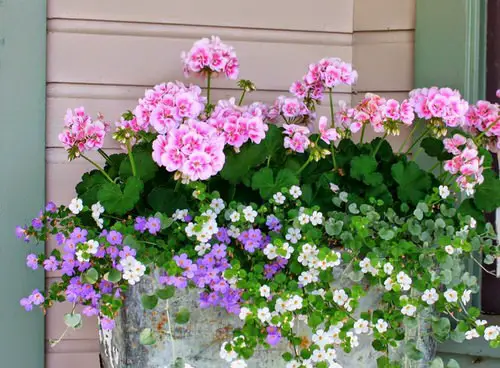
Botanical Name: Dianthus
USDA Zones: 3-9
It is one of the brightest plants for window boxes. These flowers are easy-to-grow and care-for annual flower plants with white, pink, and red blooms.
8. Hydrangeas

Botanical Name: Hydrangea macrophylla
USDA Zones: 6-9
You can add a splash of cool blue to your window with Hydrangeas. They grow in tight clusters, making them appear more magical in boxes!
9. Negrita Parrot Tulip
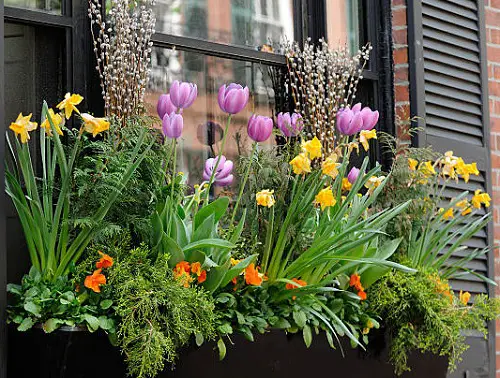
Botanical Name: Tulipa ‘Negrita’
USDA Zones: 3-8
Are you looking for a jewel-toned perennial flower? You can opt for the purple Tulip or Negrita Parrot Tulip that helps evoke powerful feelings from their velvety-textured petals.
Best Foliage Plants for Window Boxes
10. Silver Ragwort
Botanical Name: Jacobaea Maritima
USDA Zones: 8-10
Choosing to plant Dusty Miller or Silver Ragwort could be perfect, for it stands out as a neutral go-to plant for any existing color scheme.
11. Elephant Ears
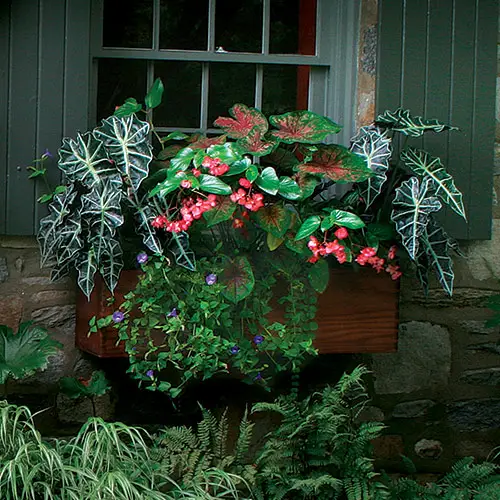
Botanical Name: Colocasia esculenta
USDA Zones: 8-11
Their large elephant ear-shaped, dark green, slightly ruffled leaves with veins and leaf stalks on the underside make them look so stunning on the window boxes.
12. Coral Bells
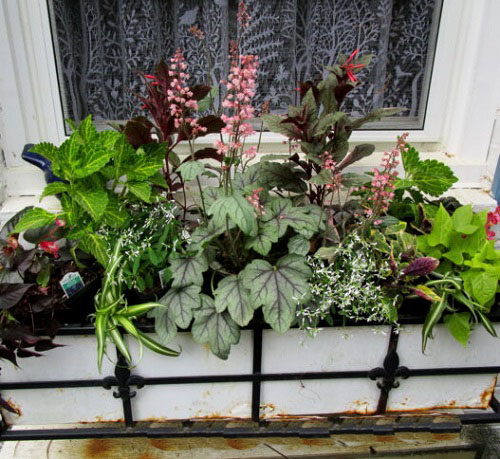
Botanical Name: Heuchera
USDA Zones: 3-9
This charmer is primarily grown for its foliage appeal and could add a touch of beauty to your windows, thanks to its easy-to-care nature.
13. Ferns
Botanical Name: Tracheophyta
USDA Zones: 3-12
Ferns are one of the best plants for window boxes. They are easy to maintain and remain green all year round, which makes them perfect to add a natural appeal to the windows.
14. Rex Begonias
Botanical Name: Begonia rex
USDA Zones: 10-11
Begonias can add bright, colorful shades and a tropical look to your windows with their gorgeous, ruffled, lush foliage and flowers.
Here is How to Grow Rex Begonia Vine Indoors
15. Sweet Potato Vine
Botanical Name: Ipomoea batatas
USDA Zones: 9-11
This vine derives its name from its edible relative and could be a good choice for the window box because of its attractive leaves and vining habit.
16. Coleus
Botanical Name: Plectranthus scutellarioides
USDA Zones: 10-11
This fast-growing foliage plant with striking colors in combinations of yellow, green, red, maroon, and pink. All it needs is bright, indirect light and well-draining soil.
17. Creeping Jenny
Botanical Name: Plectranthus scutellarioides
USDA Zones: 3-9
If you like spillers, then this must be your pick for the plant for window boxes. Its bright green hue is sure to turn a lot of heads to your windows!
Best Succulents for Window Boxes
18. Echeveria
Botanical Name: Echeveria
USDA Zones: 9-12
Echeverias are prized for their stunning rosette-shaped foliage, which comes in various colors, including shades of green, blue, pink, and purple.
19. Stonecrop
Botanical Name: Sedum
USDA Zones: 3-9
Fleshy leaves and clusters of star-shaped flowers characterize Stonecrop. These plants come in various shapes, sizes, and colors.
20. Hens and Chicks
Botanical Name: Sempervivum
USDA Zones: 3-8
Hens and Chicks are perennial succulents known for their distinctive rosette growth habit. These hardy plants come in various colors and textures.
21. Jade Plant
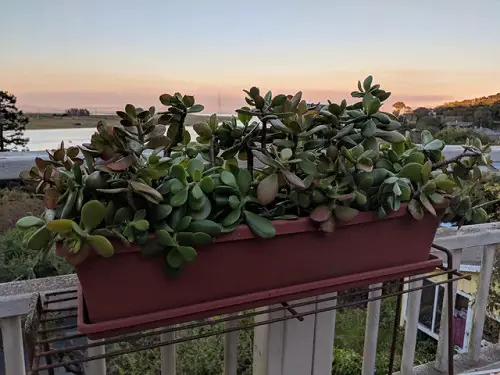
Botanical Name: Crassula ovata
USDA Zones: 10-11
The Jade Plant is characterized by thick, glossy, oval-shaped leaves and a sturdy, tree-like structure. It is valued for its attractive appearance, resilience, and bringing good luck.
22. String of Pearls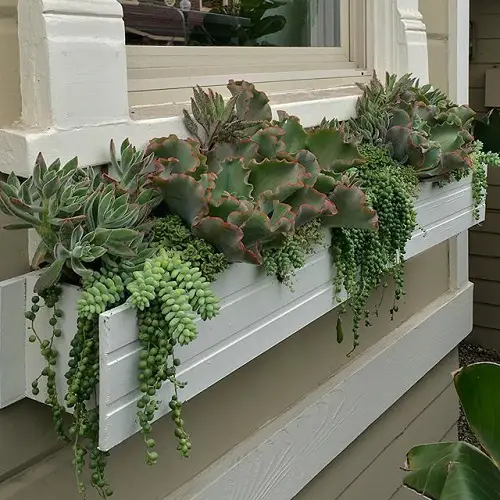
Botanical Name: Senecio rowleyanus
USDA Zones: 9-12
String of Pearls is instantly recognizable due to its trailing stems that bear spherical, bead-like leaves resembling pearls. The leaves provide a distinct and eye-catching appearance.
23. Moss Rose
Botanical Name: Portulaca grandiflora
USDA Zones: 9-11
Its succulent foliage and showy, rose-like flowers bloom in a variety of colors, including shades of pink, yellow, orange, and white.
Tips to Choose a Window Box
Before we get into the Best Plants for Window Boxes, let’s take a look at how you can simply choose the perfect window box.
- It can be made of brick, metal, vinyl, wood, fiberglass, and cellular PVC. But wood has always been a popular choice.
- A strong wood window box can last up to 10-15 years with proper maintenance.
- Fiberglass is insect-proof and lightweight, so it could also be a good choice for you.
- Cellular PVC and Vinyl are rot-proof as they are plastics, so they could be an ideal pick, too.
- It is best suggested to put up a small window box on a small window, and the same goes for larger windows.
- To best calculate the perfect size of the box, you should remember that the container should be about 25 percent of the window’s height.
- Do not forget to take the amount of sunlight or shade received by the particular window before considering a box or the choice of plants.

